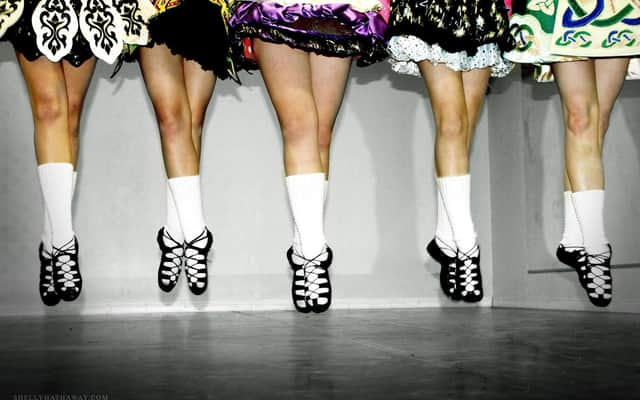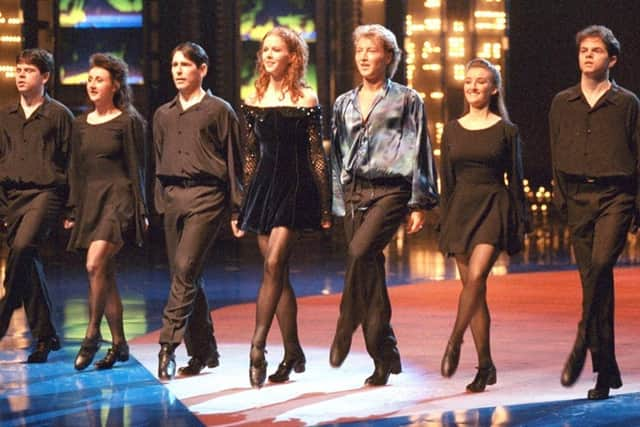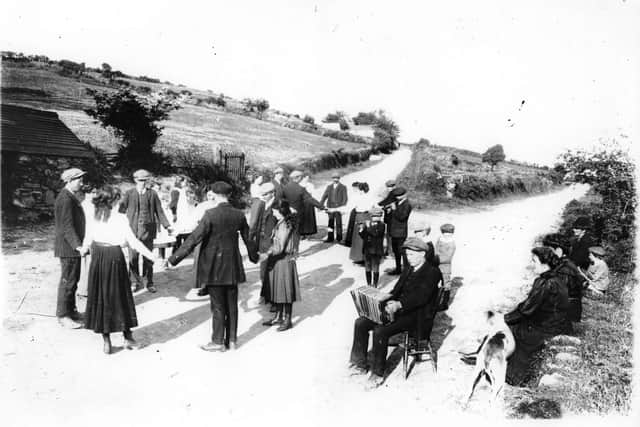Riverdance - ‘twas a far cry from ‘Welt the Flure, Biddy McClure’


The audience in the concert hall was spellbound and millions of television viewers watched entranced as Riverdance took over the Eurovision Song Contest.
This was spectacular, this was sexy and this was Irish! How did it happen? The outfits, the magnificent choreography, the timing, the discipline, the presentation - they were all perfect.
Advertisement
Hide AdAdvertisement
Hide AdAs these paid dancers “Welted the Flure”, it was obvious they hadn’t rehearsed to ‘mouth music’ or an out of tune piano because they were in perfect harmony with their orchestra.


Irish dancing had come a long way - but where did it come from? These were not the wild jigs that Teddy O’Neill danced in his mud cabin.
Perhaps we can thank the builders of the past, the tradesmen who constructed the dwellings and performed the various rituals involved. Their work began with the turning of the sod, then the masonry, the carpentry and the placing of a lock of the hair of the ‘Bean a Ti’ in the thatch. The last operation in constructing a new house was the laying of the clay floor which was foot stamped to level it.
Like modern builders, these men were often behind schedule and were still tramping and levelling the clay when the musicians arrived for the house warming.
Advertisement
Hide AdAdvertisement
Hide AdAs the musicians tuned their instruments and practiced, the builders were still tramping the floors. Soon, those involved in this levelling adopted the rhythm of the music.


Methodical tradesmen would line up, four abreast, and dance or tramp the length of the room. When one section was completed, they repeated the performance in a line parallel to the first and continued this until the room was done.
The first progressive dances probably evolved from this practice, dances like ‘The Four Hand Reel’ and ‘The Waves of Tory’.
Solo dancing probably started when a floor tramper danced out into the middle of the area to level a part that had been missed. As the art became established, the dancing patterns developed - such as the intertwining paths of dancers in ‘The Sixteen Hand Reel’.
Advertisement
Hide AdAdvertisement
Hide AdSeasons also influenced this evolution - particularly when a house was completed during the hay harvest. ‘The Haymakers Jig’ may simply have been two lines of floor trampers facing each other across a room.
Music dictated the tempo while solo dances and sets were named to commemorate events or places. Dancing became a central feature of most social events such as wakes, weddings and soirees.
The native repertoire of dances was later extended to include ‘The Gay Gordons’, the ‘Lancers’ etc., - probably introduced by the British military.
Crossroads dancing, boasted of by Eamon De Valera, seems a limited exercise and must have been very seasonal. The ‘Hop Step’ that is part of a number of Irish dances may have originated as a crossroads dancer tried to avoid a protruding stone on an uneven surface. Even the horses had to have iron clad hooves!
Advertisement
Hide AdAdvertisement
Hide AdThe hand pitched stone surfaces must have caused many participants to hobble home with a broken or sprained ankle. Citizens of ‘trip city’ would have had a field day.
As dancing increased in popularity, ‘flures were welted’ in parish halls, homes and other venues. So popular was the activity that a Lough Neagh fisherman, returning from a few days fishing, found that his teenage family had knocked down the blast wall in his kitchen to accommodate more dancers.
Unfortunately, some of the grace and charm of the dances were lost when it was decided to regulate the performances for competition purposes.
In the 1930s, a commission was established which introduced rules such as the bolt upright puppet-like stance and restricted hand movement. This group was composed of twenty one members - three of which were dancers - and they controlled the development of all Irish dancing, including ceili dancing.
Advertisement
Hide AdAdvertisement
Hide AdChampionships were established, rivalry intensified and spread into other areas such as dress. The female dress pattern has developed almost into an art form, while the male kilt remains largely unexplained.
Dancing schools were set up and teachers qualified to teach strictly according to commission rules.
Despite the rumours, smiling was not banned.
New dances were composed within these confines, which must have restricted the natural evolution of Irish dancing.
The feverish activity and rivalry of the competitions has led to the ‘Feis Mother’, ‘The Feis Wig’ and ‘The Feis Tan’ - which have all changed the emphasis from dancing to other things.
Perhaps Riverdance has given young dancers something else to aim for, unrestricted by rules and regulations.
So, welt away.